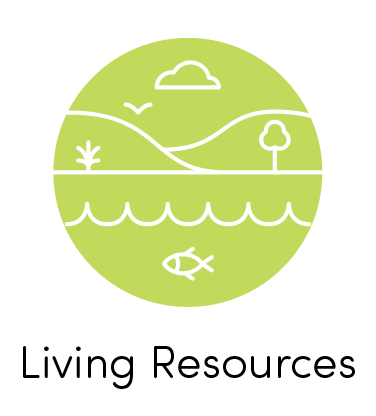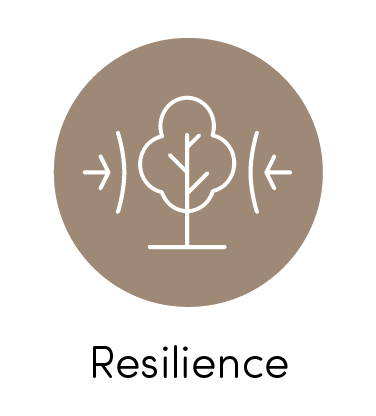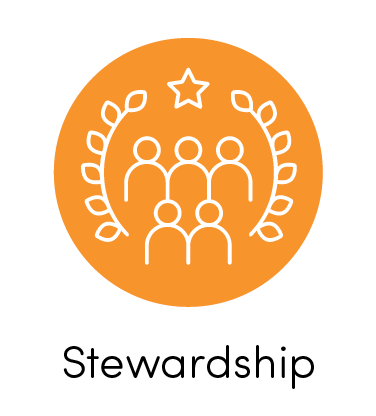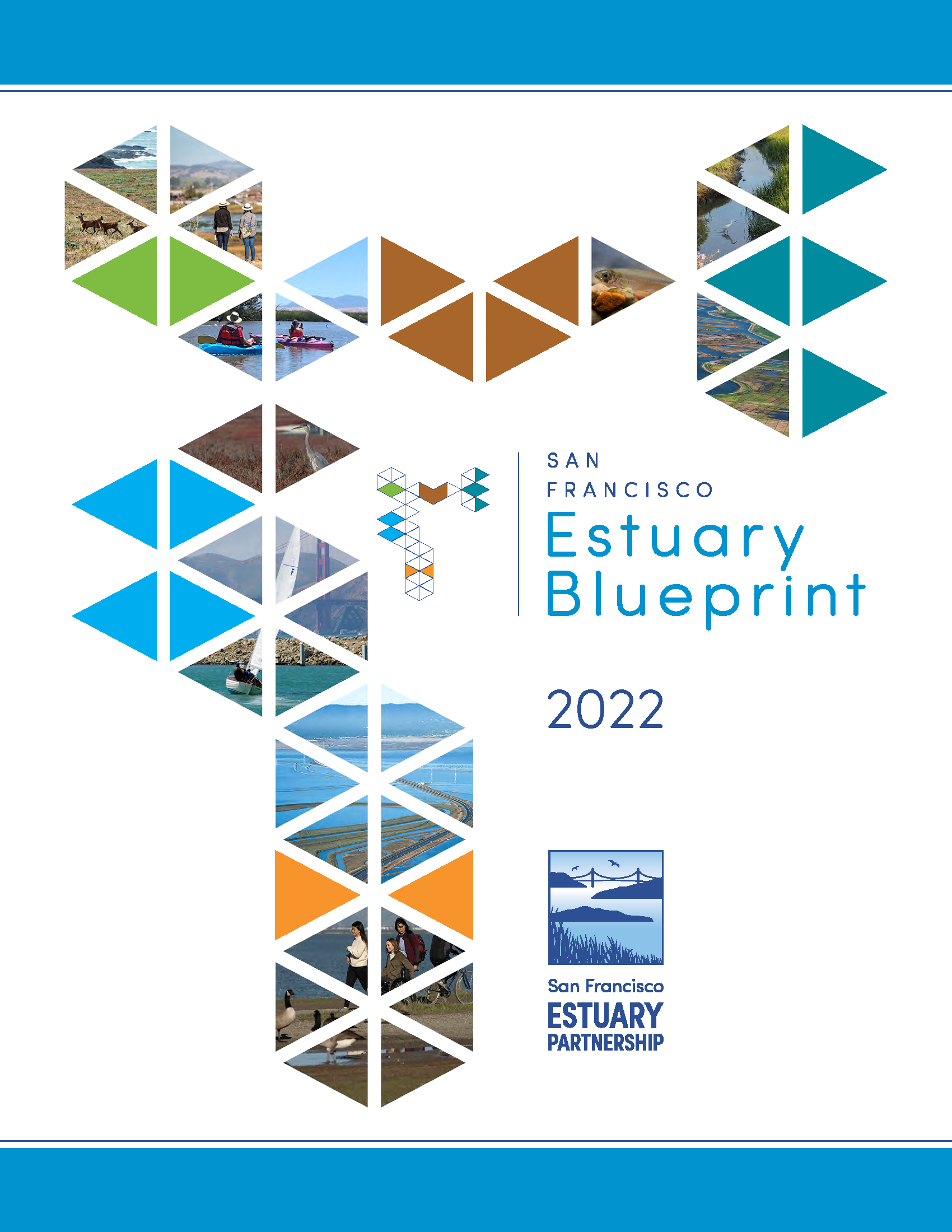Action 4: Adaptation Implementation
← Back to Estuary Blueprint Actions
Implement climate adaptation projects that prioritize natural and nature-based strategies.
Facilitate the implementation of climate adaptation projects that prioritize natural and nature-based strategies to proactively address emerging climate change issues, such as sea level rise and saltwater intrusion, and recognize interactions between projects.
Overview
Natural and nature-based shoreline infrastructure consists of existing or restored landscapes such as tidal marshes and floodplains, as well as engineered systems that incorporate natural features or processes. Natural and nature-based infrastructure provides multiple benefits including flood protection, habitat, improved water quality, and recreational benefits, and can help communities adapt to sea level rise and restore ecosystems. Living shorelines, a type of nature-based infrastructure that often includes subtidal and intertidal habitats such as oyster reefs and eelgrass beds, can not only mitigate wave action, preventing storm surges, but also provide important ecosystem functions for wildlife and shoreline communities. Accelerating the implementation of natural and nature-based infrastructure projects is a key climate adaptation strategy.
Task Description
Advance design of shoreline and bank adaptation projects or pilot projects using natural or nature-based approaches, including horizontal levees, living shorelines, transition zones, and other innovative design approaches.Task Lead(s)
San Francisco Estuary Partnership (Coordinator)Task Collaborating Partner(s)
Audubon California, California Department of Fish & Wildlife, California State Coastal Conservancy, Central Valley Regional Water Quality Control Board, Delta Stewardship Council, San Francisco Bay Conservation & Development Commission, San Francisco Bay Joint Venture, San Francisco Bay National Estuarine Research Reserve, San Francisco Bay Regional Water Quality Control Board, San Francisco Bay Restoration Authority, U.S. Army Corps of Engineers, U.S. Fish & Wildlife ServiceCost Estimate Key
|
Cost Estimate
$$$Milestone(s)
Ten project designs.Task Description
Advance implementation of shoreline and bank adaptation projects using natural or nature-based approaches.Task Lead(s)
San Francisco Estuary Partnership (Coordinator)Task Collaborating Partner(s)
California Department of Fish & Wildlife, California State Coastal Conservancy, Central Valley Regional Water Quality Control Board, Delta Stewardship Council, San Francisco Bay Conservation & Development Commission, San Francisco Bay Joint Venture, San Francisco Bay National Estuarine Research Reserve, San Francisco Bay Regional Water Quality Control Board, San Francisco Bay Restoration Authority, U.S. Army Corps of Engineers, U.S. Fish & Wildlife ServiceCost Estimate Key
|
Cost Estimate
$$$$Milestone(s)
Ten implemented projects.Task Description
Enhance existing subtidal and intertidal artificial structures or design features into new structures that better provide space for and protect native species and habitats. Explore design modifications to develop green-grey approaches to modify existing and create new improvements to traditional grey infrastructure (riprap, seawalls, levees, etc.).Task Lead(s)
California State Coastal ConservancyTask Collaborating Partner(s)
Audubon California, California Department of Fish & Wildlife, National Oceanic and Atmospheric Administration, San Francisco Bay Joint Venture, San Francisco Bay National Estuarine Research Reserve, San Francisco Estuary Institute, San Francisco State University Estuary & Ocean Science Center, Smithsonian Environmental Research Center, U.S. Fish & Wildlife ServiceCost Estimate Key
|
Cost Estimate
$$$$Milestone(s)
15 pilot projects implemented that include green-grey habitat enhancement features.Task Description
Spatially track shoreline adaptation projects to help communicate the region’s progress, facilitate planning, evaluate project design and funding needs, and identify opportunities for local community input and use of nature-based adaptation strategies.Task Lead(s)
San Francisco Bay Conservation & Development Commission, San Francisco Estuary InstituteTask Collaborating Partner(s)
California State Coastal Conservancy, San Francisco Bay Regional Water Quality Control Board, Metropolitan Transportation Commission and Association of Bay Area GovernmentsCost Estimate Key
|
Cost Estimate
$$Milestone(s)
Shoreline Adaptation Project Mapping Program within EcoAtlas for the San Francisco Bay.Task Description
Share best practices, data, information, and lessons learned to advance implementation of nature-based infrastructure by expanding collaborative models such as the Transforming Urban Waters Initiative to address multiple types of natural and naturebased adaptation approaches.Task Lead(s)
San Francisco Estuary PartnershipTask Collaborating Partner(s)
Central Valley Regional Water Quality Control Board, Delta Stewardship Council, San Francisco Bay Conservation & Development Commission, San Francisco Bay Joint Venture, San Francisco Bay National Estuarine Research Reserve, San Francisco Bay Regional Water Quality Control Board, San Francisco Estuary Institute, local jurisdictionsCost Estimate Key
|
Cost Estimate
$$Milestone(s)
One to two collaborative meetings per year to address barriers to implementation for individual nature-based adaptation projects.Task Description
Task Lead(s)
Task Collaborating Partner(s)
Cost Estimate Key
|
Cost Estimate
Milestone(s)
Task Description
Task Lead(s)
Task Collaborating Partner(s)
Cost Estimate Key
|
Cost Estimate
Milestone(s)
Task Description
Task Lead(s)
Task Collaborating Partner(s)
Cost Estimate Key
|
Cost Estimate
Milestone(s)
Updates and Emerging Issues
This revised Action builds on Action 3 to facilitate and track implementation of climate adaptation projects.
Climate Change Considerations
The diversity of ecosystems and habitats in the San Francisco Estuary increases the resilience of the entire system. To support that diversity and resilience, climate planning must take a holistic and regional approach.
Equity Considerations
This Action recognizes the importance of community input and buy-in for the implementation of natural and nature-based infrastructure to address climate resilience and adaptation needs.
Blueprint Goals



Connections to Other Actions
Watershed connections provide unique habitat and ecosystem services closely related to or dependent upon:
Action 2: Equity
Action 3: Adaptation Planning
Action 4: Adaptation Implementation
Action 5: Watershed Connections
Action 9: Intertidal / Subtidal Habitats
Action 10: Tidal Marsh
Action 11: Transition Zones
